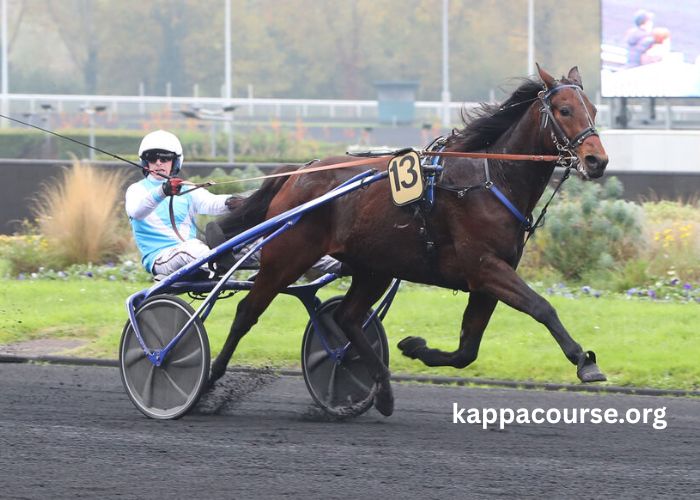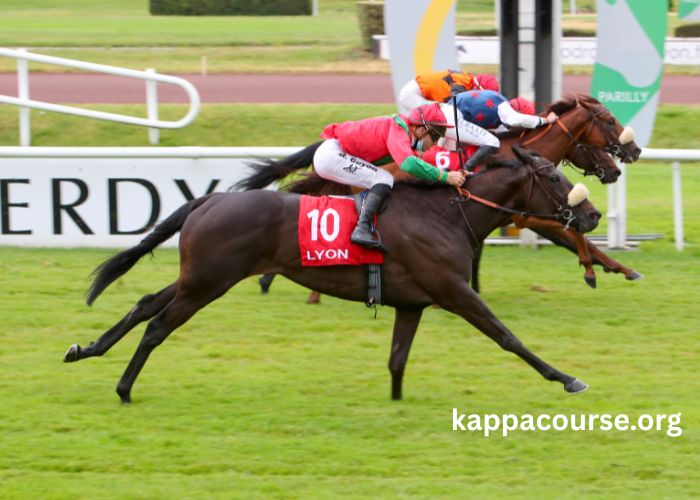that translates directly to “The Arrival of the Day.” Though simple in its meaning, it holds a much deeper significance, encompassing a range of emotional, philosophical, and cultural concepts. The phrase speaks not only to the literal arrival of morning but also evokes a sense of renewal, opportunity, and the cyclical nature of time. It represents the transition from night to day, embodying the idea of hope, growth, and fresh beginnings. The concept of L’arrivée Du Jour touches various aspects of life, from French art and literature to daily routines, making it a term of both personal and collective importance.
The expression has become symbolic in various fields such as literature, art, and even in the daily lives of the French. By exploring the essence of L’arrivée Du Jour, we can gain a better understanding of how this concept transcends the idea of a mere time of day. It speaks to the emotional resonance of a new beginning, providing a sense of clarity, purpose, and potential. Through this phrase, we see how deeply intertwined French culture is with the perception of time, and how this perception influences artistic, literary, and philosophical movements across the country.
What Does L’arrivée Du Jour Mean?
At its core, L’arrivée Du Jour translates to “The Arrival of the Day,” marking the break of dawn or the transition from night to morning. It is the moment when the darkness of the night gives way to the light of day. However, beyond this literal meaning, the phrase carries much more profound significance, symbolizing the start of a new cycle. In French culture, this moment signifies a fresh beginning, filled with opportunities, the promise of a better tomorrow, and a chance to leave behind the troubles of the past.
In both everyday life and artistic expressions, L’arrivée Du Jour is not merely a description of time; it is a metaphor for the renewal of the self. Just as the sun rises each morning, so too do individuals have the chance to rise, transform, and evolve. The French often look at this phrase as a reminder that each day is an opportunity for change, healing, and reinvention. The cyclical nature of the day’s arrival is a reflection of the cyclical nature of life itself, where every setback is followed by the possibility of growth and progress.
Why is L’arrivée Du Jour Significant in French Culture?
L’arrivée Du Jour holds great significance in French culture because of its symbolic connection to the passage of time and the concept of renewal. In French art, literature, and philosophy, the arrival of the new day has long been a subject of fascination, often representing the potential for new ideas, enlightenment, and personal transformation. The French have a longstanding tradition of viewing the arrival of the day as a metaphor for intellectual and spiritual awakening.
In French literature, for example, dawn is often depicted as a time of clarity and revelation. Writers such as Marcel Proust have used the arrival of the day to convey deep personal introspection and philosophical reflections. For Proust, the early hours were a time for discovering the truth hidden within oneself. In the works of other notable French writers like Victor Hugo, L’arrivée Du Jour is used as a literary device to mark moments of dramatic transformation in the lives of characters, signaling a shift from darkness into light, from confusion into understanding.
Furthermore, French painters, particularly in the Impressionist movement, often captured the arrival of dawn in their works, using light to symbolize hope and rejuvenation. Artists like Claude Monet and Pierre-Auguste Renoir created masterpieces that encapsulated the fleeting beauty of the early morning hours. These works of art reflect the cultural significance of L’arrivée Du Jour in France, showcasing the symbolic weight the French place on the new day as a moment of possibility.
How is L’arrivée Du Jour Celebrated in French Art?
In French art, L’arrivée Du Jour has been depicted in numerous ways, often emphasizing light, shadow, and the transition from darkness to illumination. The Impressionist painters, who were known for their focus on light and color, frequently painted scenes of dawn, capturing the beauty of the first rays of sunlight breaking through the horizon. Monet’s “Impression, Sunrise,” for example, is an iconic work that portrays the moment of dawn in a way that speaks to the renewal and calm associated with L’arrivée Du Jour.
The influence of L’arrivée Du Jour in French art can be seen in both visual art and in the realm of cinema. In French films, the arrival of the new day is often used to set the stage for significant character development or pivotal narrative shifts. In classics like “La Haine” and “Amélie,” the dawn is used as a symbolic turning point, a moment when the characters face new possibilities or confront their pasts. In these films, L’arrivée Du Jour becomes more than just a passing moment; it is an emotional and philosophical marker, signaling a change in direction for the characters.
French artists also embrace the idea of L’arrivée Du Jour in their depictions of natural landscapes. The concept of the new day is not just limited to human experience but extends to the natural world. Dawn is a moment when the landscape comes alive, bathed in the soft light of morning. This portrayal emphasizes the connection between humans and nature, showing how the arrival of the day affects both the individual and the world around them. Through art, L’arrivée Du Jour captures the beauty of this daily transformation, offering both a visual and emotional interpretation of the day’s arrival.
How Does L’arrivée Du Jour Relate to French Literature?
In French literature, L’arrivée Du Jour is frequently used as a symbol of awakening and introspection. The early hours of the morning are often a time for characters to reflect, to reconcile with their inner thoughts, or to begin anew. French writers like Albert Camus and Jean-Paul Sartre explored the significance of time in their existential works, using the arrival of the day to illustrate the themes of freedom, responsibility, and personal growth.
The works of Proust also highlight the philosophical implications of L’arrivée Du Jour, with the early morning serving as a time to break free from the constraints of memory and to embrace the possibility of reinvention. The dawning of a new day is depicted as a chance to gain insight into the self, to reconcile with one’s emotions, and to step forward into a new phase of existence. In this sense, L’arrivée Du Jour is more than just the beginning of a 24-hour cycle—it is a recurring opportunity for enlightenment, self-discovery, and personal transformation.
In the novels of Victor Hugo, dawn is often the backdrop for moments of revelation or decision. In “Les Misérables,” for example, the arrival of the new day often symbolizes a moment of moral reckoning or change in the character’s journey. Whether it is a moment of hope or despair, L’arrivée Du Jour is intertwined with the larger moral and existential questions that permeate Hugo’s work.
How Has L’arrivée Du Jour Influenced Other Cultures?
Though L’arrivée Du Jour has its roots in French culture, its significance has reverberated across the world. Many cultures recognize the symbolism of the arrival of the day as a powerful metaphor for new beginnings and the renewal of life. In Eastern philosophies, for example, the break of dawn is associated with spiritual awakening and the cultivation of inner peace. The symbolism of light overcoming darkness speaks to universal themes of enlightenment, clarity, and personal growth.
In literature and art from other cultures, the transition from night to day is similarly used as a way to mark important moments of change or revelation. The Indian epic, the Mahabharata, for instance, uses the arrival of the new day as a time of reflection and renewal. Similarly, in the works of South American authors like Gabriel García Márquez, dawn is often depicted as a moment of surreal change, where the boundaries between reality and imagination blur. The universal appeal of L’arrivée Du Jour demonstrates how deeply ingrained this symbolism is across cultures, highlighting its relevance to people everywhere.
How Can You Incorporate the Spirit of L’arrivée Du Jour into Your Own Life?
Incorporating the spirit of L’arrivée Du Jour into your daily routine can be a transformative experience. By viewing each new day as an opportunity for growth, reflection, and change, you can foster a mindset that embraces renewal and possibility. Whether through early morning meditation, journaling, or setting goals for the day, the concept of L’arrivée Du Jour can serve as a daily reminder that every moment offers a fresh start.
Additionally, taking time to connect with nature during the early morning hours can amplify the effects of L’arrivée Du Jour. The stillness and beauty of the morning can help center your thoughts and prepare you for the day ahead. Whether it’s through a quiet walk at sunrise or simply sitting in contemplation as the world wakes up, embracing the arrival of the day can foster a sense of peace, clarity, and purpose.
As we adopt the mindset of L’arrivée Du Jour, we can learn to see each new day not as a continuation of yesterday’s struggles but as an opportunity for renewal and transformation. By approaching life with this sense of optimism and hope, we can harness the full potential of each moment.
Conclusion
L’arrivée Du Jour is a powerful concept that transcends its literal meaning, representing not only the arrival of a new day but also the opportunities and potential that come with it. In French culture, it symbolizes renewal, hope, and the cyclical nature of time, themes that are reflected in art, literature, and daily life. Whether through the works of French poets, artists, or philosophers, the arrival of the day has long been viewed as a moment of transformation and reflection. By incorporating the spirit of L’arrivée Du Jour into our own lives, we can embrace each day as a chance for growth, self-discovery, and new beginnings. Each dawn offers a reminder that the possibilities of the future are endless, and that with every new day, we are presented with the opportunity to change, evolve, and move forward.





